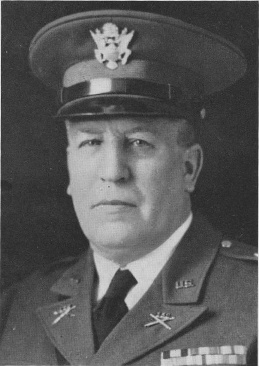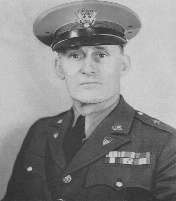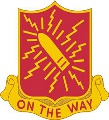







Pre-World War II
152nd Field Artillery Regiment
152nd Field Artillery Regiment
(c) 152nd Field Artillery Association, 2009
From 1939:
The 152nd Field Artillery is the youngest regiment of the National Guard troops in Maine. It was originally organized as a separate battalion under the authority of the Militia Bureau of the War Department dated September 12, 1921, with headquarters at Houlton, Maine. Recruiting for the organization was started on October 24, 1921.
The battalion was presented for inspection and Federal recognition in February, 1922, the order of recognition being as follows:
Headquarters Detachment and Combat Train, Houlton, February 8, 1922; Battery A, Presque Isle, February 9, 1922; Battery B, Caribou, February 10, 1922; Battery C, Fort Fairfield, February 11, 1922, and Headquarters, First Battalion, Houlton, May 15, 1922.
Major James W. Hanson was assigned to the command on May 15, 1922, taking the battalion into camp at Fort Devens, Massachusetts, for its first tour of duty. Captain Ittai A. Luke of the Regular service was detailed as the first instructor. Captain Luke was a high type of officer and was most patient under the trying experiences of training recruits in the rudiments of field artillery. By the greatest understanding and instructive ability on his part, a battalion of field artillery was finally evolved.
On April 12, 1922, John G. Potter was authorized to recruit a medical detachment at Houlton, which was Federally recognized June 16, 1922.
The 152nd Field Artillery is the youngest regiment of the National Guard troops in Maine. It was originally organized as a separate battalion under the authority of the Militia Bureau of the War Department dated September 12, 1921, with headquarters at Houlton, Maine. Recruiting for the organization was started on October 24, 1921.
The battalion was presented for inspection and Federal recognition in February, 1922, the order of recognition being as follows:
Headquarters Detachment and Combat Train, Houlton, February 8, 1922; Battery A, Presque Isle, February 9, 1922; Battery B, Caribou, February 10, 1922; Battery C, Fort Fairfield, February 11, 1922, and Headquarters, First Battalion, Houlton, May 15, 1922.
Major James W. Hanson was assigned to the command on May 15, 1922, taking the battalion into camp at Fort Devens, Massachusetts, for its first tour of duty. Captain Ittai A. Luke of the Regular service was detailed as the first instructor. Captain Luke was a high type of officer and was most patient under the trying experiences of training recruits in the rudiments of field artillery. By the greatest understanding and instructive ability on his part, a battalion of field artillery was finally evolved.
On April 12, 1922, John G. Potter was authorized to recruit a medical detachment at Houlton, which was Federally recognized June 16, 1922.
Colonel Herbert L. Bowen, the first
commander of the 152nd Regiment
James W. Hanson, the first commander of the 1st
Battalion and later Adjutant General of Maine
The commanding officer of the battalion, Major Hanson, was appointed Adjutant General of Maine on
November 1, 1922, thus relinquishing command of the battalion, and Captain Malcolm S. W. Dingwall,
Commanding Officer, Battery A, was assigned to command, later being promoted to the rank of Major.
When the regiment was completed in 1929, he was made Lieutenant Colonel and assigned as Executive
Officer, serving in that capacity until his retirement to the inactive list, June 22, 1934. The retirement of
Colonel Dingwall was regretted by the entire regiment. He was a loyal and conscientious officer, willing to do
more than his share of the work, and his concern for the welfare of the men of the command earned for him
the admiration and respect of them all.
The designation of the unit at Houlton was changed from Headquarters Detachment and Combat Train to Headquarters Battery and Combat Train, First Battalion, August 17, 1925. On March 3, 1926, John H. Davidson of Oldtown was authorized to recruit a service battery and band. This unit was presented for Federal inspection and accepted, April 14, 1926, and was stationed at Oldtown, Maine.
Captain Luke's term of service as instructor having expired, he was relieved by Lieutenant Albert C. Donnovan, who was with the battalion but a short time. He was replaced by Captain Warren Davis, who was stationed at Presque Isle. Captain Davis possessed a pleasing personality, was a thorough horseman and an excellent artillerist. He was universally liked by every officer and man. Much was accomplished during his detail.
By authority of the Secretary of War, the Chief of the Militia Bureau authorized the following headquarters and units to be presented for Federal recognition not earlier than March 1, 1929: Headquarters, Second Battalion; Battery D, Battery E, Battery F, and Headquarters, 152nd Field Artillery. The same authority also designated Major Herbert L. Bowen, 103rd Infantry, to recruit two batteries of field artillery. By authority contained in letter from the Chief of Military Bureau, January 14, 1929, Company M, 103rd Infantry, stationed at Bangor, was converted to field artillery and assigned as Battery D, effective February 1, 1929. March 20,
The designation of the unit at Houlton was changed from Headquarters Detachment and Combat Train to Headquarters Battery and Combat Train, First Battalion, August 17, 1925. On March 3, 1926, John H. Davidson of Oldtown was authorized to recruit a service battery and band. This unit was presented for Federal inspection and accepted, April 14, 1926, and was stationed at Oldtown, Maine.
Captain Luke's term of service as instructor having expired, he was relieved by Lieutenant Albert C. Donnovan, who was with the battalion but a short time. He was replaced by Captain Warren Davis, who was stationed at Presque Isle. Captain Davis possessed a pleasing personality, was a thorough horseman and an excellent artillerist. He was universally liked by every officer and man. Much was accomplished during his detail.
By authority of the Secretary of War, the Chief of the Militia Bureau authorized the following headquarters and units to be presented for Federal recognition not earlier than March 1, 1929: Headquarters, Second Battalion; Battery D, Battery E, Battery F, and Headquarters, 152nd Field Artillery. The same authority also designated Major Herbert L. Bowen, 103rd Infantry, to recruit two batteries of field artillery. By authority contained in letter from the Chief of Military Bureau, January 14, 1929, Company M, 103rd Infantry, stationed at Bangor, was converted to field artillery and assigned as Battery D, effective February 1, 1929. March 20,
1929, Major Bowen was transferred and assigned to command the 152nd Field Artillery. Thus there were now formed the following additional units of the regiment:
Headquarters, Bangor, April 3, 1929; Headquarters, Second Battalion, Bangor, April 3, 1929; Battery D, Bangor, February 1, 1929; Battery E, Brewer, March 5, 1929, and
Battery F, Bangor, March 8, 1929.
Major Bowen was promoted to Colonel on April 3, 1929, and assigned to command the now completed regiment. It is of interest to note that this was the first light field artillery regiment ever organized in the state of Maine. While it is true that Maine has had much artillery in its history, they were all organized as separate batteries and never as field artillery regiments. To complete the regimental organization, Headquarters Battery, 152nd Field Artillery, Bangor, and Headquarters Battery and Combat Train, Second Battalion, Bar Harbor, were recruited and recognized on January 2 and 3, 1930, respectively. The only changes in stations and designations of units have been on May 4, 1936, when the Service Battery was transferred to Bangor, there to be recruited as a new battery; the battery at Old Town redesignated as Headquarters Battery and Combat Train, Second Battalion, and the old unit of the same designation at Bar Harbor being designated as Headquarters Battery, 68th Field Artillery Brigade.
Many changes took place among the field and staff officers during this period. Major Thomas Packard commanding the First Battalion, resigned and Captain John F. Choate was promoted to Major and assigned to command the First Battalion. Colonel Dingwall's vacancy was filled by the promotion of Major Frank Silliman, III, and Major Choate was transferred to command the Second Battalion, vice, Major Silliman. Captain George W. Putnam, commanding Battery C, was promoted to Major and assigned to the First Battalion. Shortly after these changes, the regiment met with a severe loss in the resignation of Colonel Silliman, due to his business interests being transferred to another state. Lieutenant Colonel Silliman was an outstanding officer, having served with the Fifth Field Artillery during the World War and bringing to the National Guard the traditions of the Regular service. By his executive ability, he was a valuable factor in the building of this new regiment. Major Choate was promoted to fill the vacancy and Captain Norman E. Whitney was assigned to command the Second Battalion with station in Bangor.
In 1933, the horses were taken away and the regiment was made truck-drawn. This was the cause of considerable lament but has proved to have been a very good change. Range facilities in Maine are negligible, and by the use of trucks, the regiment has been able to make full use of the artillery range at Fort Ethan Allen, Vermont.
The completion of the organization of the regiment necessitated an additional instructor. Lieutenant Crowell R. Pease was ordered to duty with the regiment with station at Houlton, relieving Captain Warren Davis, who went to Bangor as senior instructor. Lieutenant Pease was a native of Maine, having been graduated from Colby. At the expiration of his tour of duty, Captain Davis was relieved by another Maine man, Lieutenant Colonel Harold E. Mart, who was formerly a member of the National Guard, Infantry. Entering the Regular service from civilian life, he rapidly rose in the service until he became one of the outstanding officers in the field artillery and in the years he was with this regiment, it made more progress than in all the years before. Lieutenant Pease was relieved by Major Ward C. Goessling, who, upon the relief of Colonel Mart, was transferred to Bangor and Major Nathan McCluer was detailed as First Battalion instructor, with station at Caribou. At the time of the compilation of this history, Major Goessling is just being relieved by Major Thomas R. Miller who will have station in Bangor.
The tours of duty at annual field training have been as follows: Horse-drawn-1929, Camp Keyes; 1930, Camp Devens (43rd Division) ; 1931, Bangor (Camp Pope) and Pea Cove; 1932, Bangor (Camp Gardiner). Truck-drawn -1933, Camp Keyes; 1934, Camp Keyes and Ft. Williams; 1935, Pine Point Maneuvers (Philadelphia, New York) ; 1936, Fort Ethan Allen, Vermont (Range) ; 1937, Fort Ethan Allen, Vermont; 1938, Fort Ethan Allen, Vermont, and 1939, First Army Maneuvers, Plattsburg, New York.
Beginning with 1934, the regiment has had motion picture historical records of all tours of duty. [Association Note: Portions of this film are posted on our YouTube page]
Major Bowen was promoted to Colonel on April 3, 1929, and assigned to command the now completed regiment. It is of interest to note that this was the first light field artillery regiment ever organized in the state of Maine. While it is true that Maine has had much artillery in its history, they were all organized as separate batteries and never as field artillery regiments. To complete the regimental organization, Headquarters Battery, 152nd Field Artillery, Bangor, and Headquarters Battery and Combat Train, Second Battalion, Bar Harbor, were recruited and recognized on January 2 and 3, 1930, respectively. The only changes in stations and designations of units have been on May 4, 1936, when the Service Battery was transferred to Bangor, there to be recruited as a new battery; the battery at Old Town redesignated as Headquarters Battery and Combat Train, Second Battalion, and the old unit of the same designation at Bar Harbor being designated as Headquarters Battery, 68th Field Artillery Brigade.
Many changes took place among the field and staff officers during this period. Major Thomas Packard commanding the First Battalion, resigned and Captain John F. Choate was promoted to Major and assigned to command the First Battalion. Colonel Dingwall's vacancy was filled by the promotion of Major Frank Silliman, III, and Major Choate was transferred to command the Second Battalion, vice, Major Silliman. Captain George W. Putnam, commanding Battery C, was promoted to Major and assigned to the First Battalion. Shortly after these changes, the regiment met with a severe loss in the resignation of Colonel Silliman, due to his business interests being transferred to another state. Lieutenant Colonel Silliman was an outstanding officer, having served with the Fifth Field Artillery during the World War and bringing to the National Guard the traditions of the Regular service. By his executive ability, he was a valuable factor in the building of this new regiment. Major Choate was promoted to fill the vacancy and Captain Norman E. Whitney was assigned to command the Second Battalion with station in Bangor.
In 1933, the horses were taken away and the regiment was made truck-drawn. This was the cause of considerable lament but has proved to have been a very good change. Range facilities in Maine are negligible, and by the use of trucks, the regiment has been able to make full use of the artillery range at Fort Ethan Allen, Vermont.
The completion of the organization of the regiment necessitated an additional instructor. Lieutenant Crowell R. Pease was ordered to duty with the regiment with station at Houlton, relieving Captain Warren Davis, who went to Bangor as senior instructor. Lieutenant Pease was a native of Maine, having been graduated from Colby. At the expiration of his tour of duty, Captain Davis was relieved by another Maine man, Lieutenant Colonel Harold E. Mart, who was formerly a member of the National Guard, Infantry. Entering the Regular service from civilian life, he rapidly rose in the service until he became one of the outstanding officers in the field artillery and in the years he was with this regiment, it made more progress than in all the years before. Lieutenant Pease was relieved by Major Ward C. Goessling, who, upon the relief of Colonel Mart, was transferred to Bangor and Major Nathan McCluer was detailed as First Battalion instructor, with station at Caribou. At the time of the compilation of this history, Major Goessling is just being relieved by Major Thomas R. Miller who will have station in Bangor.
The tours of duty at annual field training have been as follows: Horse-drawn-1929, Camp Keyes; 1930, Camp Devens (43rd Division) ; 1931, Bangor (Camp Pope) and Pea Cove; 1932, Bangor (Camp Gardiner). Truck-drawn -1933, Camp Keyes; 1934, Camp Keyes and Ft. Williams; 1935, Pine Point Maneuvers (Philadelphia, New York) ; 1936, Fort Ethan Allen, Vermont (Range) ; 1937, Fort Ethan Allen, Vermont; 1938, Fort Ethan Allen, Vermont, and 1939, First Army Maneuvers, Plattsburg, New York.
Beginning with 1934, the regiment has had motion picture historical records of all tours of duty. [Association Note: Portions of this film are posted on our YouTube page]
152nd Field Artillery Association
Colonel Bowen and Regimental Staff Photo Pages (.pdf file, opens a new window)
Regimental Headquarters Battery Photo Pages (.pdf file, opens a new window)
Regimental Service Battery Photo Pages (.pdf file, opens a new window)
Regimental Band Photo Pages (.pdf file, opens a new window)
New !!!
New !!!
New !!!
New !!!
Medical Department Detachment Photo Pages (.pdf file, opens a new window)
New !!!


















